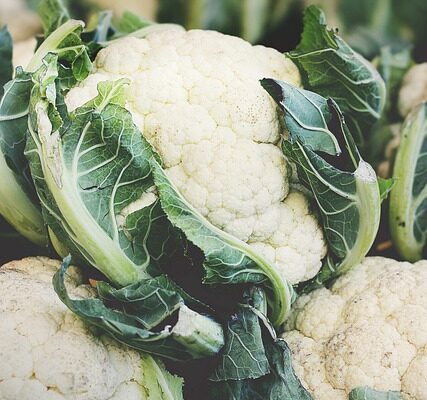You will avoid foods that contain lectins (a type of protein) on a lectin-free diet, like wheat and other grains, beans and lentils. In addition, you need to stay away from dairy products from cows, practically all fruits, and many vegetables.
Many health specialists have voiced worry that eliminating such a broad range of foods may result in vitamin deficiencies.
The lectin-free diet became popular by cardiologist Steven Gundry, MD, in his 2017. He and other diet supporters believe that ingesting lectins can result in weight gain, brain fog, chronic inflammation, poor digestion due to a disordered microbiome, and other negative symptoms.
Meal Plan for 7 Days
While a lectin-free diet contains both authorized and unapproved foods, it does not stipulate when or where you must eat your meals, unlike many diet regimens. This diet doesn’t limit calories or portion sizes which means you can eat till you’re satisfied. In fact, Gundry asserts in “The Plant Paradox” that “you may actually consume substantially more than you used to eat and yet lose weight.”

The 7-day lectin-free diet is illustrated below, beginning with phase one, which is the most stringent and lasts three days. Keep in mind that this is an example of an unhealthy diet. Before beginning this diet, consult with your doctor.
Day 1:
Spinach smoothie with romaine lettuce, avocado, mint, lemon juice, and stevia extract; 3 oz. Pastured chicken, mustard greens, sauteed mushrooms with coconut oil; 2 oz. Wild-caught salmon, lettuce with lemon and olive oil, and steamed asparagus
Day 2:
2 oz. Wild-caught halibut with lemon, avocado, and sautéed spinach in coconut oil; spinach smoothie with romaine lettuce, avocado, mint, lemon juice, and stevia extract; broccoli, cabbage, and carrot stir-fry, kimchi
Day 3:
Avocado, asparagus, raw sauerkraut; beet greens, avocado, beet, and lemon smoothie; 3 oz. Pastured chicken and cooked kale with garlic, lemon, and olive oil
Day 4:
Bok choy, carrots, and coconut oil; 3 ounces wild-caught salmon, avocado, beet greens, lemon juice, coconut oil, and walnuts; 1-ounce dark chocolate, 3 ounces pastured chicken, cooked Brussels sprouts and raw sauerkraut salad
Day 5:
1-ounce dark chocolate, 1-ounce green mango, walnuts, avocado; leafy greens, hemp protein powder, water, mint, and lemon smoothie; 3 ounces wild-caught cod, raw beet salad with pine nuts and basil.
Day 6:
A smoothie made with coconut milk, almond butter, spinach, and hemp protein powder; an avocado and raw beet salad with olive oil, mustard greens, and lemon dressing; 4 ounces pastured chicken, Napa cabbage, asparagus, and 1-ounce dark chocolate.
Day 7:
1-ounce dark chocolate, avocado, walnuts, and 2 ounces pastured chicken salad on leafy greens with lemon and olive oil vinaigrette; 3 oz. Wild salmon, hemp seeds, lemon, asparagus
What You Can Consume
Of course, on a lectin-free diet, you will reduce (or eliminate) lectin-containing items. Dr. Gundry’s website includes a detailed list of “yes” and “no” foods.
Foods with Low or No Lectin Content
- Meats raised on grass
- Seafood and fish
- Poultry has grown on pasture
- Soy-free plant-based meats
- Dairy products made from buffalo, goat, or sheep
- Cruciferous veggies
- Yummy sweet potatoes
- Several nuts and seeds
- Avocado, olive, and coconut oils
- Almond or coconut flour
- Dark Chocolate
What You Shouldn’t Eat. See below.
Lectin-Containing Foods
- Meats raised on grains, poultry, or seafood
- The majority of starchy foods, including potatoes, rice, and grains
- Lentils with beans
- Tomatoes, eggplant, and peppers are examples of nightshade vegetables.
- Except for berries in season, fruits
- Dairy items made from cow’s milk
- Sugar and sugar-sweetened beverages
- Soy products
Tips for Preparing the Lectin-Free Diet
It all comes down to avoiding lectin-containing foods on this diet. Some people may jump immediately into a lectin-free diet, but if you follow Gundry’s official regimen, you’ll go through three stages.
First Stage: A three-day “cleanse” removes everything except a handful of veggies.
Second Stage: Include all remaining lectin-free foods.
Third Stag (Optional): Limit your animal protein consumption to 4 ozs or less per day and adopt intermittent fasting.
A lectin-free diet may be beneficial for persons with particular health difficulties, but nutritionists have not embraced it as a healthy way to eat or a method of treating specific health conditions.
The Benefits of a Lectin-Free Diet
It’s unclear whether eliminating lectins from your diet would result in dramatic health benefits such as weight loss, inflammation, or improved digestion—but eating a diet low in processed foods may have significant benefits.
Reduces the inflammatory response:
Consuming lectins may cause an inflammatory reaction, according to some studies. A study published in the Journal of Immunology in 2017 found a biochemical pathway by which this can occur, hypothesizing that lectins operate as a “danger signal” that increases autoimmune disorders. As a result, lowering or removing lectins may help to reduce inflammation.
Nutrient absorption may be improved:
Have you ever heard of “anti-nutrients”? Although it may appear to be a contradiction in terms, lectins are occasionally labeled as such because, as they accumulate in the stomach, they might interfere with nutrient digestion and absorption. Eliminating them from your diet may allow your intestines to absorb more critical nutrients.
People suffering from irritable bowel syndrome (IBS) may benefit from the following:
Many persons with irritable bowel syndrome discover that certain meals trigger their symptoms. Therefore foods high in lectins may increase constipation, diarrhea, bloating, or other IBS symptoms. Some studies suggest that there may be an interaction between lectin-containing meals and FODMAPs (carbohydrates known to induce digestive issues in IBS patients). More research is needed to evaluate how eliminating lectins could help persons with IBS.
Whole foods are prioritized: A lectin-free diet has one guarantee:
You won’t be eating a lot of processed foods. Because of the diet’s limits, you’ll most likely prepare at home with whole foods like veggies, grass-fed meats, and plant-based fats. This might probably be beneficial in a society that consumes much too many calories from manufactured foods. You might even pick up some useful kitchen skills if you have to cook at home.
May reduce disease risk:
More processed foods in the diet are associated with an increased risk of hypertension, cardiovascular disease, metabolic syndrome, cancer, obesity, and even depression, according to research. It’s usually a good idea to eat whole, unadulterated foods whenever feasible, and a lectin-free diet may assist you in doing so.
The Drawbacks of a Lectin-Free Diet
The most significant downside of a lectin-free diet is its restrictive character, which may have negative health consequences.
Limited evidence of effectiveness:
Although there is some evidence that lectins may be harmful, there is no agreement among nutrition experts that a lectin-free diet is a beneficial way of treating or avoiding any health condition.
The existing research does not apply to humans:
There has been very little research on the effects of lectins on health because most of it has been done on animals. Furthermore, while some foods (such as raw kidney beans) do contain high enough levels of lectins to cause food poisoning, boiling decreases them to a safe level.
It may be difficult to consume enough vital nutrients:
Going without lectins may also mean going without certain essential nutrients. Consuming enough fiber is especially difficult when you can’t eat grains or legumes to have a well-balanced diet. In addition, getting plenty of antioxidants is especially difficult when fruits are off the menu. In the long run, a lack of vitamins, minerals, and antioxidants from produce may result in nutrient deficiencies.
Difficult to understand:
There’s no doubt that the lectin-free diet has a large list of forbidden foods. Adhering to its rigorous limits will almost certainly be difficult, and you may lose out on favorite items that don’t make the cut.
Might interfere with Social Gatherings:
Any diet that removes broad groups of foods has the potential to disrupt social eating. You may be unable to participate in the food served when dining out or at parties or events. This can cause worry, frustration, or feelings of isolation.
Many authorized meals are pricey:
Although a lectin-free diet encourages the consumption of affordable veggies such as broccoli, carrots, and onions, other recommended items may be costly. Grass-fed meats, goat, sheep, or buffalo dairy products, and high-priced cooking oils like avocado and walnut are not cheap. Before beginning this diet, you should assess whether it is financially possible.
Unwanted side effects are possible:
A low-carbohydrate diet is generally a recipe for lethargy, headaches, mood swings, and other unpleasant side effects.
Constipation may result from a lack of fiber:
You may become constipated if you do not consume enough fiber from grains, legumes, fruits, and vegetables.
Is the Lectin-Free Diet a Good Option for You?
A lectin-free diet can provide all of the nutrients required for optimum health. You don’t have to lose out on the macro and micronutrients you need every day with the range of items on the diet’s “yes” list.
A lectin-free diet, on the other hand, can have serious nutritional consequences. Carbohydrates are definitely scarce in this area, so attaining the recommended 45% to 65% of your daily calories from them would be difficult.
Furthermore, because the diet excludes grains, you will fall well short of the 3 ounces of whole grains per day recommended by the 2020 Dietary Guidelines for Americans. Because of the lack of grains (as well as beans, lentils, and a variety of vegetables), it may be difficult to meet your daily fiber goal of 25 grams for women and 38 grams for men.
Because almost entire fruits are excluded from this diet, you may not end up consuming enough of vitamin C, potassium, and folate.
To Conclude
Some people have reported success with a lectin-free diet for weight loss, increased energy, and improved digestion—but the jury is still out on whether the data support its use for any health issue. And because it excludes so many essential items (such as beans, grains, and fruits), this diet is probably not worth following for most people.
If you’re thinking about going lectin-free, consider how much you’re ready to give up and for what potential benefits. And, as with any diet, ask your doctor or a trained nutritionist before embarking on a lectin-free diet.
While we do not support fad diets or unsustainable weight loss approaches, we do give the facts so that you can make an informed decision that best suits your nutritional needs, genetic blueprint, budget, and goals.
If weight loss is your aim, keep in mind that reducing weight isn’t always synonymous with being in optimal health, and there are many other methods to achieve health. Exercise, sleep, and other lifestyle factors all have a significant impact on your overall health.


